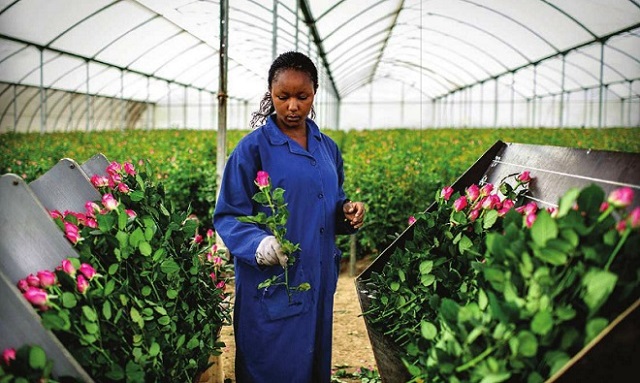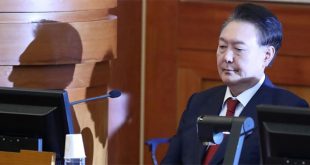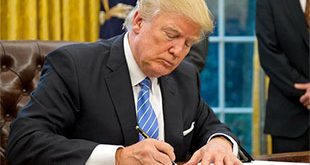
Barely eight weeks to the October 01 deadline for the East African Community (EAC) to sign the Economic Partnership Agreement (EPA) with the European Union (EU), one would expect the regional bloc to be handling the issue with a degree of urgency. Apart from Kenya, the rest of the member States are unbothered.
Last week, more than 7,000 delegates and civil society organisations from around the globe gathered at the Kenyatta International Conference Centre in Nairobi for the 14th UN Conference on Trade and Development (UNCTAD) to focus on kick-starting actions to implement the Sustainable Development Goals.
Deadline nears as activists demand review of EPA negotiations prior to penning controversial agreement
The conference was also meant to provide a platform for making sideline deals and possible match-making including the signing of the much anticipated EPA. The agreement was literally meant to open up markets for goods and services between the two regions ending more than seven years of negotiation.
However, Tanzania and Uganda backtracked on the deal barely a week to the conference, with the former citing Britain’s decision to leave the 28-member EU.
The new decision came at a time when Kenya’s Deputy President William Ruto was canvassing the EAC States including the bloc’s ‘sickman’ Burundi, which is now facing EU sanctions over violence, urging them to sign the EPA.
However, trade negotiation experts in Uganda don’t want the EAC States to touch the EPA even with a long stick. They want the negotiations to be reviewed prior to signing the agreement to protect the social-economic interest of the region.
Nathan Irumba, the chief executive officer of the South and Eastern African Trade Information and Negotiations Institute (SEATINI) and who was at one time involved in the EAC-EU negotiation representing Uganda from 1996-2004, told The Independent that it is time for the region to revisit the negotiations and amend some clauses that could threaten the development of the region.
“It is time that the region and EU reviews the negotiation,” says Irumba. “No country should be imposed of taxes because it has not signed the EPA as per our early promise. It is at this point that the EU needs to be reminded that during the start of our negotiation, we agreed that no country would be left worse off than before with or without signing the EPAs.”
He says that in any case, EAC bloc should be treated by EU as a Least Developed Country region, which should benefit from duty free quota free market access given the fact that the region consists of four LDC’s and only one developing country.
In the EAC, only Kenya is ranked as a developing country and so its products would be denied duty free access to the EU market upon expiry of the deadline slated for Oct 01.
Among the issues under contention in the proposed agreement according to those familiar with the negotiation includes; the need to have an extensive liberalization of imports up to 82.6% of all imports from the EU by 2033, a clause that the civil society organisations led by officials at SEATINI-Uganda say will have a negative implication on the livelihoods of the EAC citizens in areas of employment, shrinking of EAC policy space, and the region’s efforts to industrialise and to integrate meaningfully into the global economy.
“Liberalisation is based on the argument that the region needs cheap intermediate goods to be used as inputs in the production processes thus enhancing competitiveness; and finished products whose availability of lower costs is deemed to have consumer welfare-enhancing effect,” says Jane Nalunga, the executive director at SEATINI.
“However, permanent removal of tariffs on these products makes it extremely difficult for the region to produce them in future thus curtailing the industrialisation process and relegating the region to perpetual production of raw materials.”
The experts also say there’s need to amend clauses on the Most Favoured Nations, which tries to open up opportunities for all the members of the World Trade Organisation and limit free access of agricultural and non-agricultural products into the regional market as they risk outcompeting the region’s agriculture sector due to high production costs resulting from lack of subsidies unlike their counterparts in Europe.
Julius Onen, the permanent secretary at Uganda’s trade ministry told The Independent that Uganda and the rest of the countries in the EAC would have to agree among themselves once again before penning the agreement at a later date.
“Following Tanzania’s decision not sign the EPAs, we also decided not to sign it because we have been negotiating as a bloc and not individual countries,” Onen told The Independent, adding that no country in the region can sign the deal single-handedly since the negotiation has been involving the entire bloc.
Three weeks ago, Tanzania’s Foreign Affairs permanent secretary Aziz Mlima said his country decided not to sign the agreement arguing that the pact would risk exposing young EAC countries to harsh economic conditions given the prevailing conditions in Europe.
“Our experts have established that the way it has been crafted, the EPA will not benefit local industries in East Africa. Instead, it will lead to their destruction as developed countries are likely to dominate the market,” Mlima told The Citizen, a Tanzanian daily.
Mlima’s remarks echoed strong criticism of the pact by former President Benjamin Mkapa who had warned the EAC not to rush to sign the pact because it was designed to kill the local manufacturing sector.
This is the second time that Tanzania has thrown the region into a diplomatic disarray over the EPA, after a similar move in 2014 that saw Kenyan exports mainly flowers, fruits vegetables, to the EU attract duty of up to 8.5% following delays in finalising an EPA.
But the country’s private sector believes that signing the EPA’s cautiously could stir the growth of local firms especially with the importation of duty free raw materials and technological transfer.
“We really feel that EAC signing of EPA will be mutually beneficial to both regions,” said Gideon Badagawa, the executive director at the Private Sector Foundation Uganda (PSFU). “It will help us build capacity to produce for the local and international markets, help us in other areas such as infrastructural facilities and making us truly competitive.”
He says there’s no need for the producers in the region to panic since implementation of EPA’s would be gradual, starting with the access of raw materials duty free and later finished products, facilitating growth of local companies.
He, however, acknowledges the fact that opening up the market for agricultural products could affect local production given the fact that EU provides subsidies to its farmers, a scenario that the regional governments are not ready to provide to the farmers in the region.
But with all the standoff within the region and differences among various stakeholders, what is the option for Kenya whose products will soon attract taxes on the EU market once the October deadline expires?
According to Irumba, Kenya needs to be granted an enhanced Generalized System of Preferences where her top exports to the EU including flowers and horticulture exports access the EU market duty free, a proposal that the EU seem to accept.
The EU’s “Generalized Scheme of Preferences” (GSP) is a special arrangement that allows developing countries to pay less or no duties on their exports to the EU.
In October 2014, EU imposed taxes on the Kenya’s exports following the failure by the bloc to sign the EPA. Fortunately, the European Parliament and the European Council’s decided to reinstate the East African country to the list of privileged countries under the Market Access Regulation, a move that saw Kenya’s flower export earnings register a 5% growth in earnings to $623 million last year, with the export volumes standing at 122,825 metric tonnes of flowers, up from 114,763 in 2014.
On the other hand, members of the European Parliament are looking at extending the October deadline of signing the EPA between the EAC and the EU to help save Kenya from heavy taxes for its exports to its market.
Bernd Lange, the chairman of a joint EU delegation of Trade and Development Committee, said Kenya would be the biggest casualty should the standoff persist.
“Our proposal is to have the Oct. 01 deadline extended to allow for more time and see whether Tanzania will agree to sign or if Burundi will improve her democratic situation and evade sanctions from the European Union,” Lange said.
“If none of these happen then I expect that Kenya will apply for the GSP and when it is received then we can begin the market access regulations and save Kenya.”
But even as the EAC-EPA is deadlocked, the EU and six countries of the Southern African Development Community (SADC) signed the EPA, the first of its kind between the EU and an African region pursuing economic integration last month.
The signature took place in Kasane, Botswana including the EU and the host, Lesotho, Mozambique, Namibia, South Africa and Swaziland.
EU trade agreements timeline:
February 1975 – The EU and 71 ACP countries develop and sign the “Lome Convention”
1999 – The World Trade Organisation Members protest Lome Convention saying it breached General Agreement on Trade Tariff (GATT) rules
February 29, 2000 – 25-year old Lome Convention is expired after three renewals
June 23, 2000 – The Cotonou Partnership Agreement is signed
Oct. 13, 2007 – EAC directs Member States to harmonise their positions on new trade agreement with EU
Dec. 31, 2007 – Cotonou Agreement expires, EU starts EPA negotiations with ACP countries
Dec. 31, 2007 – EU and the EAC sign the interim/framework EPAs (FEPA)
Oct. 01, 2014 – New deadline as negotiations in the areas of Customs and Trade Facilitation; Standards, and Sanitary and Phyto-sanitary measures, Fisheries, Economic and Development co-operation finalized but the Comprehensive EPA signing is put on hold. Import duties of between 5% and 22% are imposed on Kenyan goods under the GSP. Other EAC Partner States remain under the Everything But Arms (EBA) Initiative.
January 2016 – Kenya is removed from duty-free, quota-free access to the EU markets.
July 2016 – Tanzania and Uganda decline to continue with the negotiations ahead of the Oct. 01, 2016 deadline
 The Independent Uganda: You get the Truth we Pay the Price
The Independent Uganda: You get the Truth we Pay the Price



